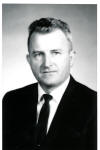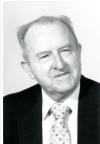

 |
 |
Norman Alton Minton, 92, passed away on Tuesday, September 5, 2017
in Gray, Geogia. Norman was born on October 12, 1924 in Spring Garden, Alabama
to the late Pearson and Clara Savage Minton. He faithfully served his country in
the United States Army during WWII, serving two years in Europe with the Army
Corp of Engineers and the remainder of the time in the Philippines and Japan. He
received a B.S. degree in Agricultural Education and a M.S. degree in
Horticulture from Auburn University. In 1955, Dr. Minton joined the USDA ARS as
an Assistant Nematologist in Auburn, Alabama. At the same time, he also
enrolled part time at Auburn University and was awarded a Ph.D. in Zoology in
1960. In 1964, he was transferred to Tifton, Georgia
to fill the position vacated by Dr. Joe Good.
His research dealt with managing nematodes on agronomic and forage crops.
Dr. Minton was a strong advocate of interdisciplinary cooperative research.
He worked on almost every agronomic practice likely to affect nematode
populations including host-plant resistance, nematicides, crop rotation,
tillage, and briefly with the parasitic bacterium Pasteuria penetrans.
Dr. Minton identified resistance to Meloidogyne spp. in several forages.
He also evaluated peanut cultivars for resistance to M. arenaria and
M. hapla. Dr. Minton demonstrated the value of growing Meloidogyne-resistant
soybean which resulted in a shift away from planting susceptible cultivars.
Along with coworkers, he determined that in-row subsoiling of compacted soil
reduced nematode damage to soybean and increased yields. Fracturing the
hardpan allowed soybean roots to penetrate the subsoil where moisture was
greater and there were fewer nematodes. In other cooperative work, he
determined that high populations of M. incognita increased the incidence
of Fusariam wilt in soybean and zinc deficiency in corn. Application of a
nematicide reduced the severity of Fusarium wilt in soybean and zinc deficiency
in corn. Dr. Minton initiated several long-term crop rotation studies
which were completed by others after his retirement in 1994. He was a
charter member of the Society of Nematologists and was honored as a Fellow of
the Society in 1992.